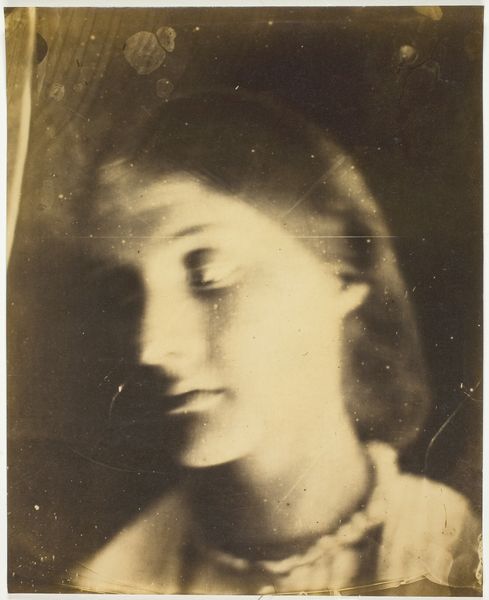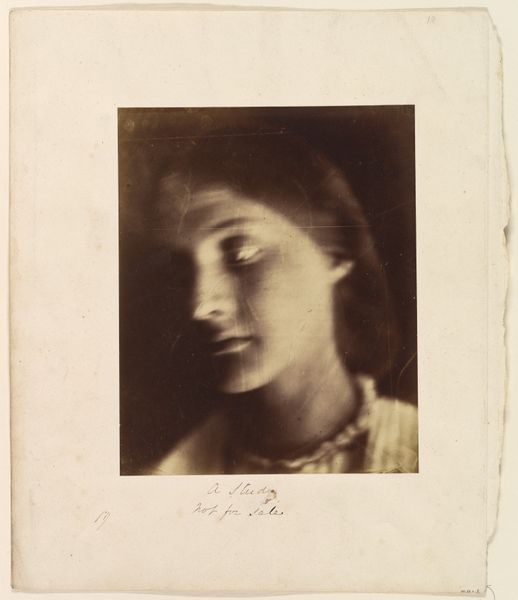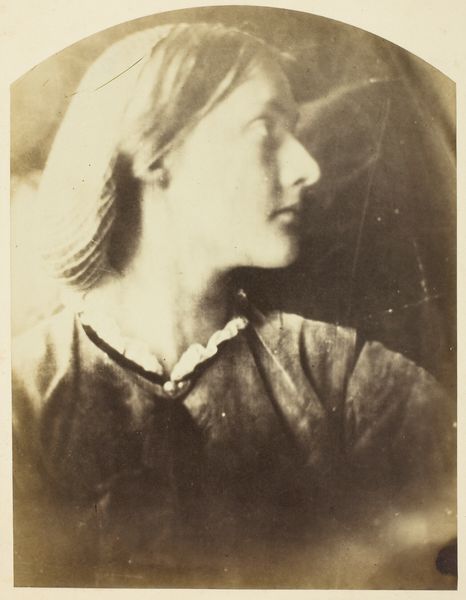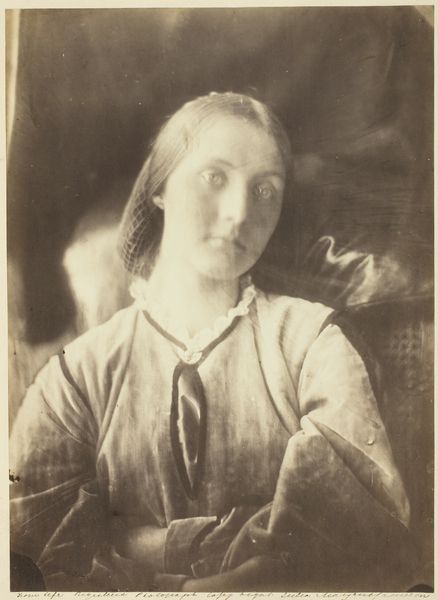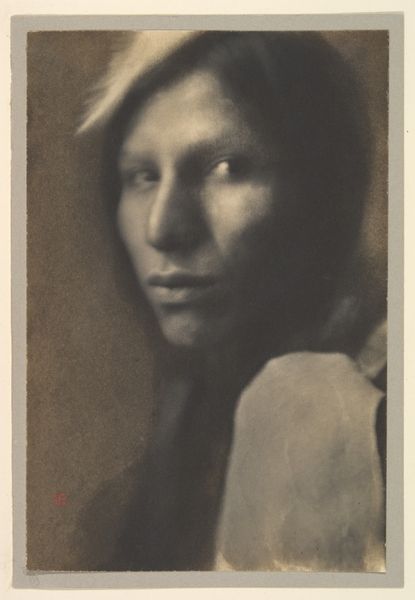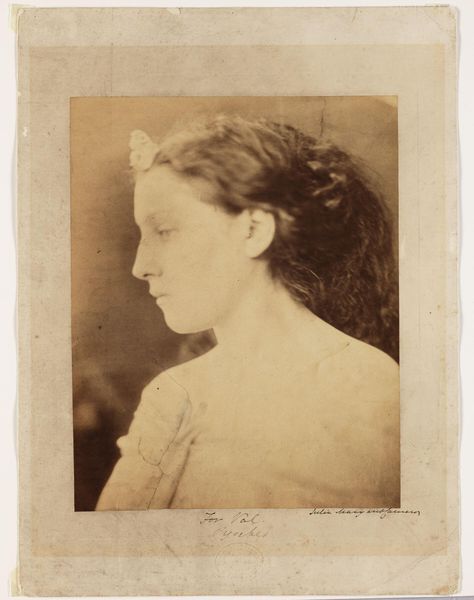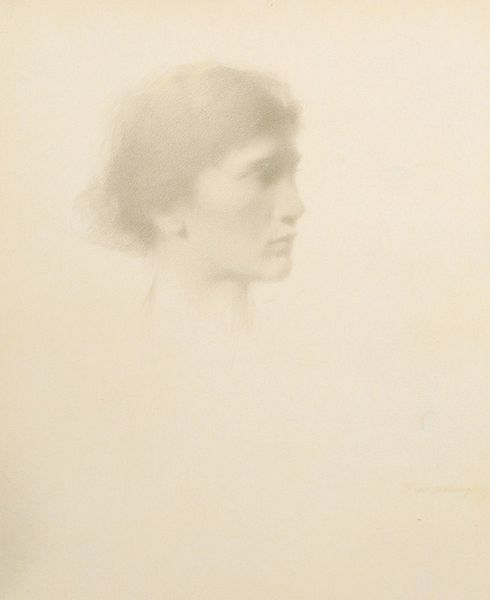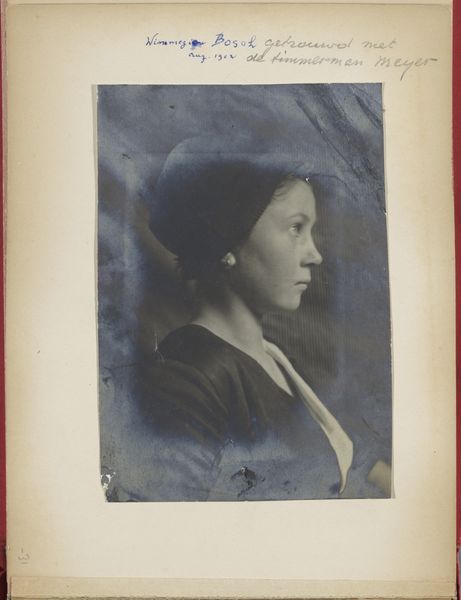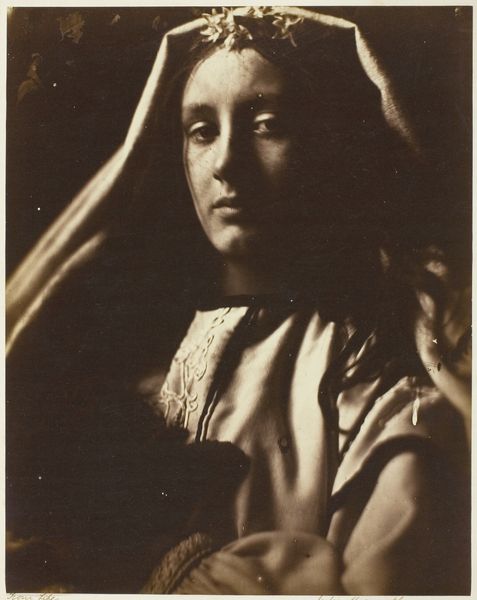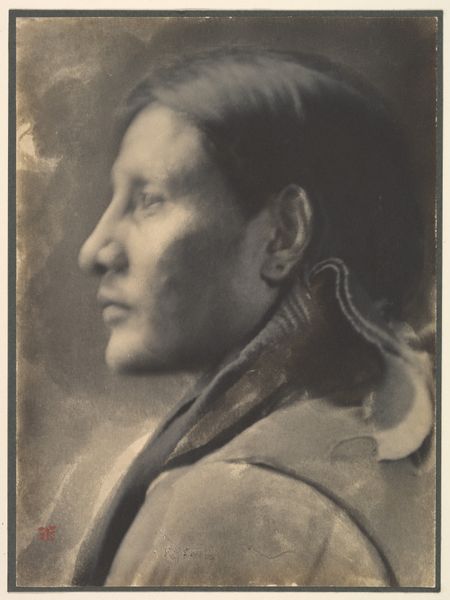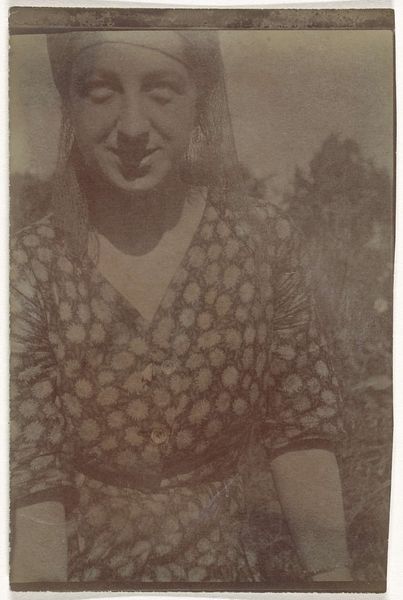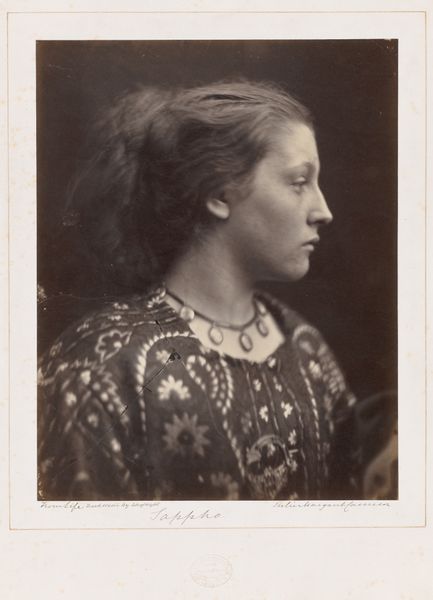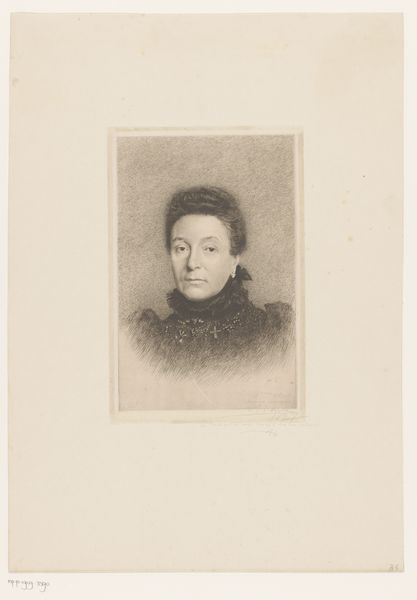
print, photography
#
portrait
#
pictorialism
# print
#
photography
#
united-states
Dimensions: 24.2 × 19.6 cm (image/paper)
Copyright: Public Domain
Editor: We're looking at Joseph Keiley's photographic print, "Asia (Zit-kala-za)," from around 1900. It has this incredibly soft, dreamlike quality. What can you tell me about it? Curator: Keiley was a key figure in Pictorialism, a movement that sought to elevate photography to the level of fine art. This portrait, like much Pictorialist work, uses soft focus and careful printing techniques to mimic the effects of painting and drawing. How does that influence our understanding of the sitter, Zit-kala-za? Editor: Well, the softness makes her seem almost ethereal, vulnerable. Who was she? Curator: Zit-kala-za, also known as Gertrude Simmons Bonnin, was a Yankton Dakota writer, composer, educator, and political activist. Given her activism and work fighting for Native American rights, does the soft focus seem like it could be obscuring her strength and identity? Or is it, perhaps, attempting to create empathy? Editor: That's a powerful point. It makes you wonder if the artistic choices, even if beautiful, could inadvertently diminish her accomplishments. Curator: Precisely. The photo was titled "Asia," a somewhat common naming convention at the time when portraying women of color. What effect could these decisions have on her representation? Is it celebrating her likeness or creating a more generic, exoticized, one? Editor: It’s troubling to think that artistic conventions and social prejudices could affect how someone so accomplished is viewed. It certainly reframes how I see the photograph and Pictorialism overall. Curator: And hopefully sparks a critical dialogue about representation, agency, and the complex role of photography in shaping historical narratives.
Comments
No comments
Be the first to comment and join the conversation on the ultimate creative platform.
